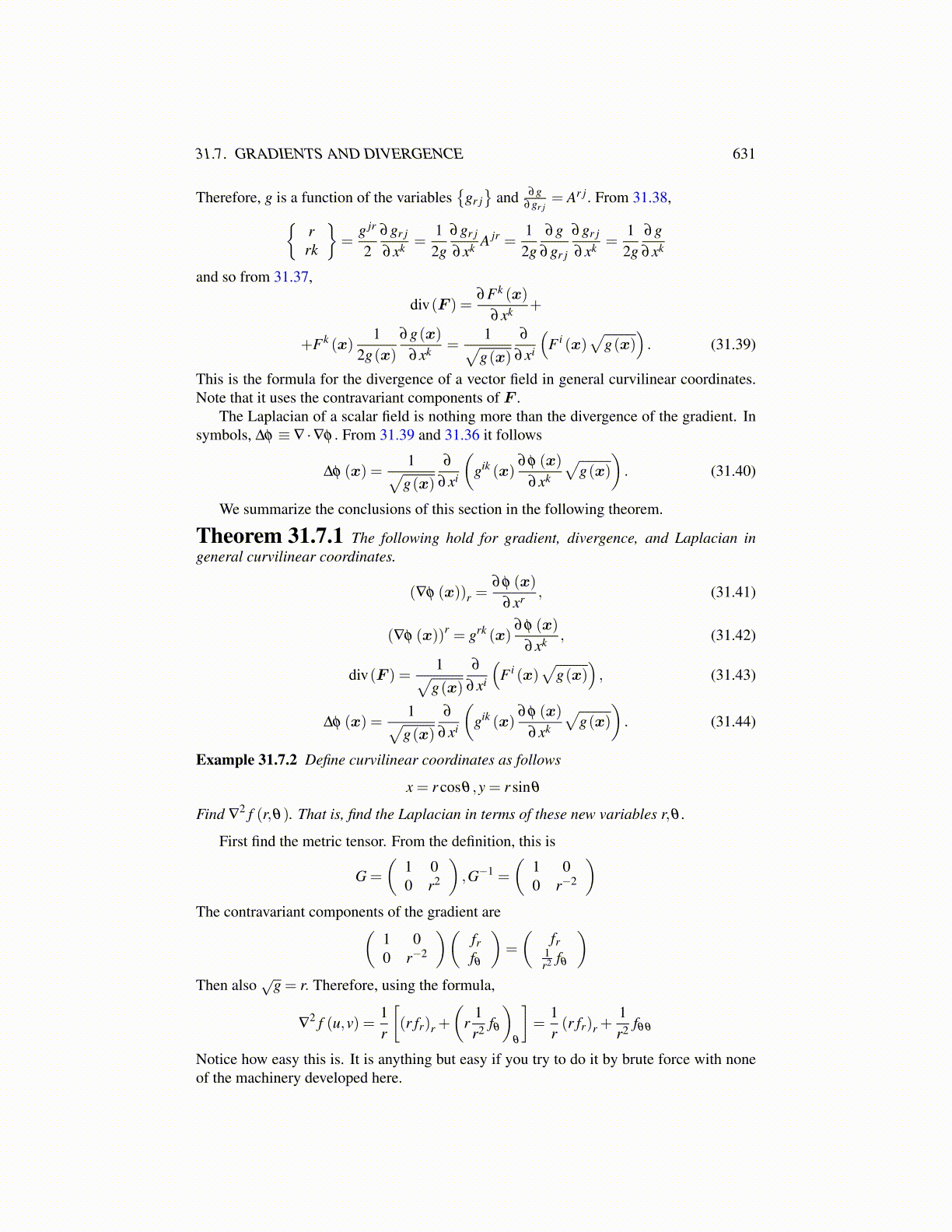
32.1. COUNTABLE SETS 631
Theorem 32.1.5 If U is an open set in Rp, then U is the union of countably manyopen boxes of the form ∏
pk=1 (ak,bk).
Proof:Let x ∈ U. Then B(x,r) ⊆ U. Pick r ∈ Qp such that r ∈ B(x, r
10p
). Then let
ui ∈Q be such that |xi − ri|< ui <r
10p for each i. Consider R ≡ ∏pi=1 (ri −ui,ri +ui) . Then
x ∈ R and if y ∈ R, Then
|x−y|=
(p
∑i=1
22u2i
)1/2
≤ 2(
pr2
100p2
)1/2
=2√
pr
10< r
Thus x ∈ R ⊆ B(x,r)⊆U . There are countably many such boxes ∏pi=1 (ai,bi) where each
ai,bi are rational and this has just shown that every point of U is in one of these boxeswhich is also contained in U .
Note there are countably many of those boxes because there are countably many (ai,bi)for each i ≤ p and what is wanted is a finite Cartesian product of these.
Also of great importance is the following lemma which says that you can stuff any openset with half open boxes with no overlap at all.
Lemma 32.1.6 Every open set in Rp is the countable disjoint union of half open boxesof the form
p
∏i=1
(ai,ai +2−k]
where ai = l2−k for some integers, l,k where k ≥ m. If Bm denotes this collection of halfopen boxes, then every box of Bm+1 is contained in a box of Bm or equals a box of Bm.
Proof: Let m ∈ N be given and let k ≥ m.
Ck = {All half open boxesp
∏i=1
(ai,ai +2−k] where
ai = l2−k for some integer l.}
Thus Ck consists of a countable disjoint collection of boxes whose union is Rp. This issometimes called a tiling of Rp. Think of tiles on the floor of a bathroom and you will getthe idea. Note that each box has diameter no larger than 2−k√p. This is because if we havetwo points,
x,y ∈p
∏i=1
(ai,ai +2−k],
then |xi − yi| ≤ 2−k. Therefore,
|x−y| ≤
(p
∑i=1
(2−k)2)1/2
= 2−k√p.
Also, a box of Ck+1 is either contained in a box of Ck or it has empty intersection with thisbox of Ck.